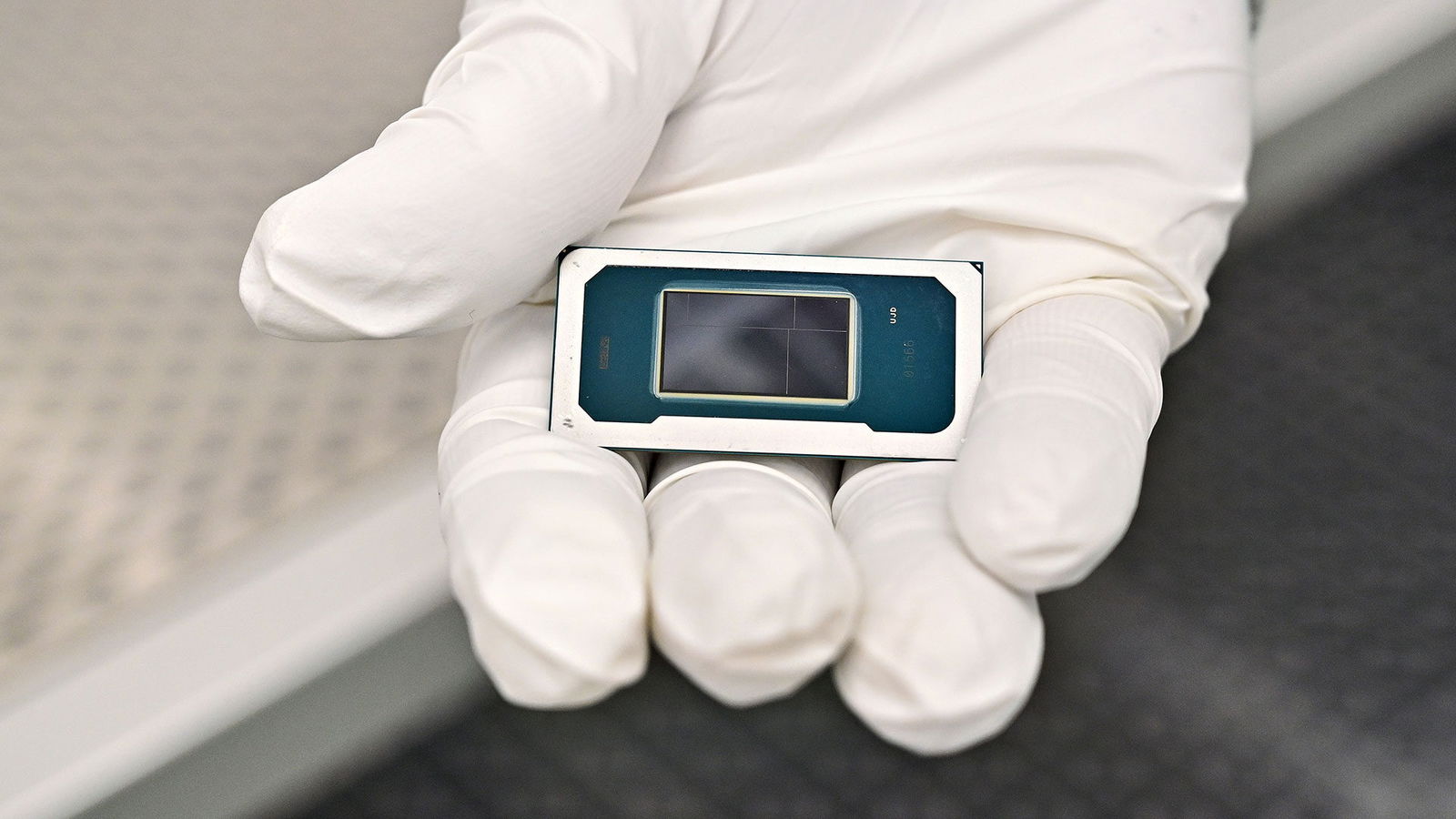The Intel Panther Lake mobile processors made their debut this week, bringing a fresh approach to the company’s ongoing pursuit of efficient performance and versatile laptop design.
Built with the long-awaited Intel 18A process, the Panther Lake series represents a major step forward by combining scalable power with next-generation AI and graphics technology, while keeping battery life a key part of the design.
Panther Lake appears to be a strong evolution of Intel’s mobile lineup, offering increased core counts and an organization focused on real-world usage, helping users get the most from their systems. At the high end, configurations feature up to 16 CPU cores, blending high-performance Cougar Cove P-cores with efficient Darkmont E-cores. This mix is designed to balance demanding tasks with background workloads, allowing both thin-and-light notebooks and high-end gaming laptops to make the most of their available power.
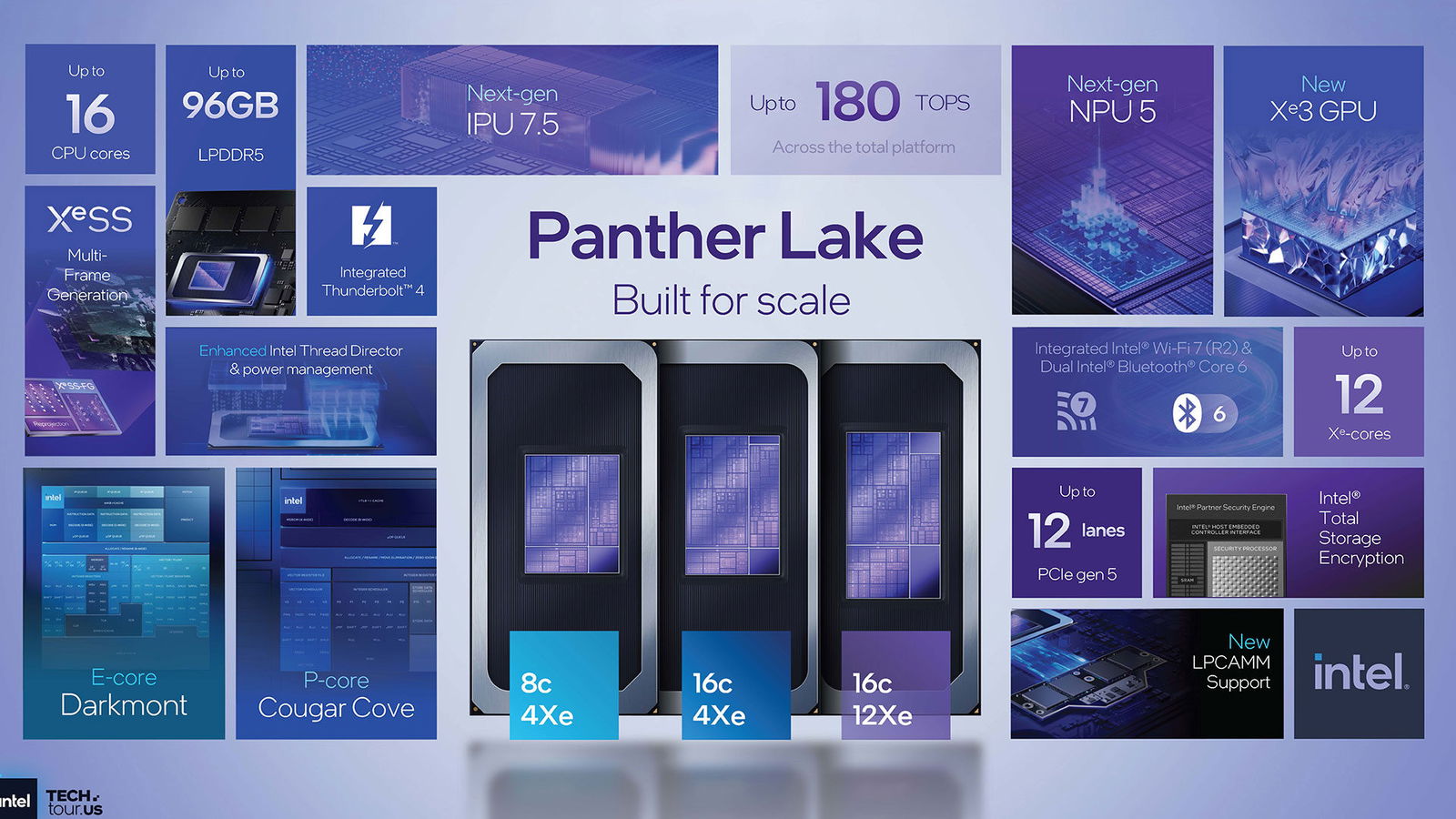
Intel also revealed that the new Panther Lake chips will support up to 96 GB of LPDDR5X memory, with advanced caching and flexible PCB options designed to give device makers more flexibility and end users a smoother experience.
There’s a lot to take in, but based on the announcement, Intel appears to be making the right moves to remain competitive with Qualcomm. The company aims to ensure laptops featuring Panther Lake are more efficient and more powerful, while delivering consistent performance without the compromises seen in earlier generations.
Panther Lake will also bring improvements to graphics performance, with up to 12 Xe3 cores and hardware ray-tracing units working alongside upgraded AI engines. The setup is designed to deliver smooth game rendering and responsive content creation. Early benchmarks provided by Intel indicate significant improvements in throughput and latency, resulting in more consistent frame rates and enhanced multitasking capabilities for mobile users.
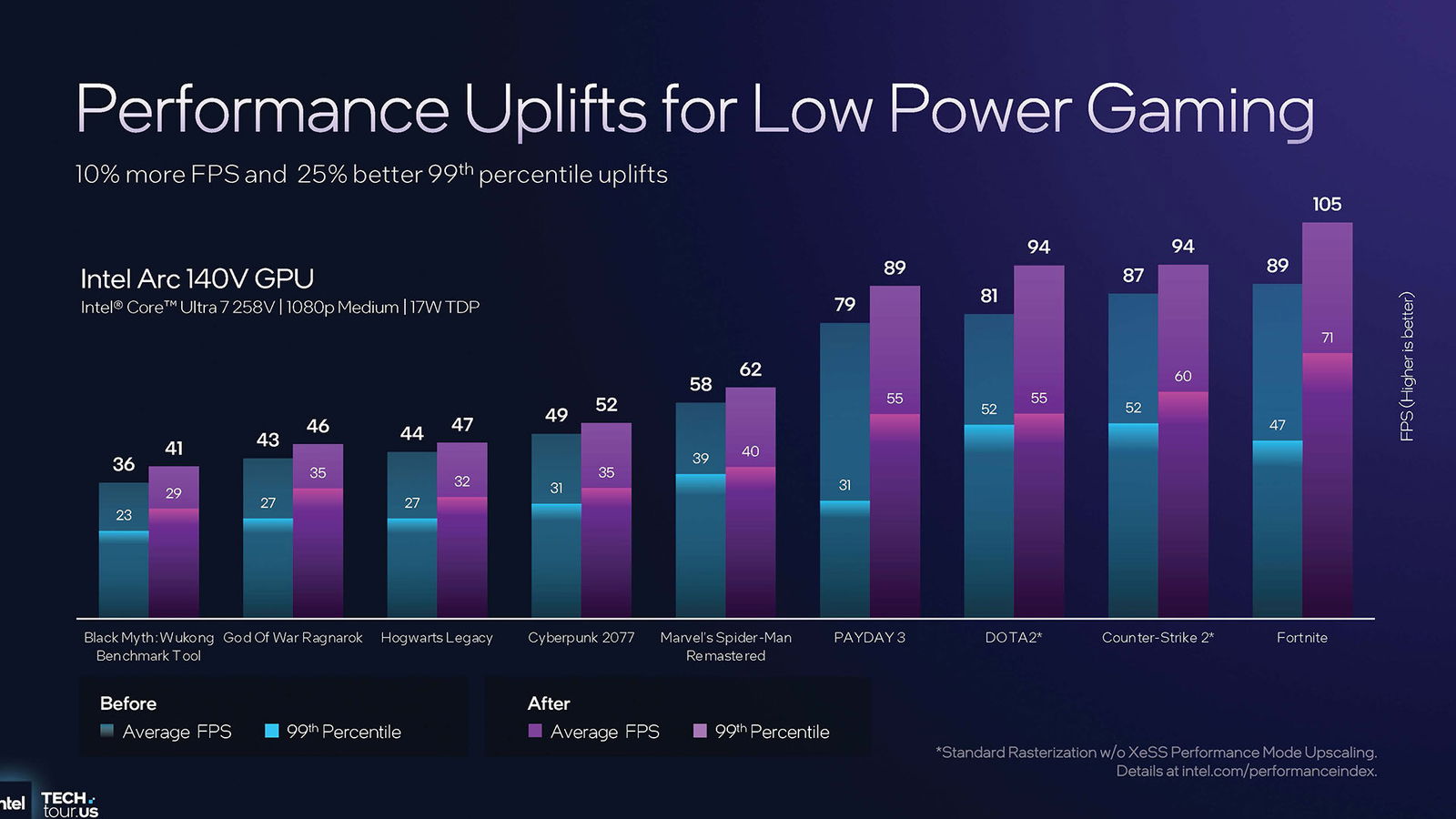
Support for technologies such as Intel XeSS multi-frame generation and new media display engines adds to the versatility of Panther Lake, broadening the chip’s appeal among gamers and creative professionals. These benchmarks will need real-world verification, but if results align with Intel’s claims, Panther Lake could handle demanding workloads more efficiently—without the battery drain that has limited previous laptops.
The Xe media engine on Intel’s Panther Lake chips also introduces a broad range of hardware-supported codecs, covering formats such as AVC, HEVC, VP9 and the latest high-efficiency video standards. It also supports professional file types used in content creation workflows, including the new Sony XAVC-H, XAVC-HS and XAVC-S formats.
For creators, this translates to smoother video editing, faster transcoding and seamless playback of high-bitrate footage, all without overloading the CPU or draining battery life. Gamers benefit as well, with hardware-accelerated decoding and encoding that improve real-time streaming and capture by reducing latency and stutter.
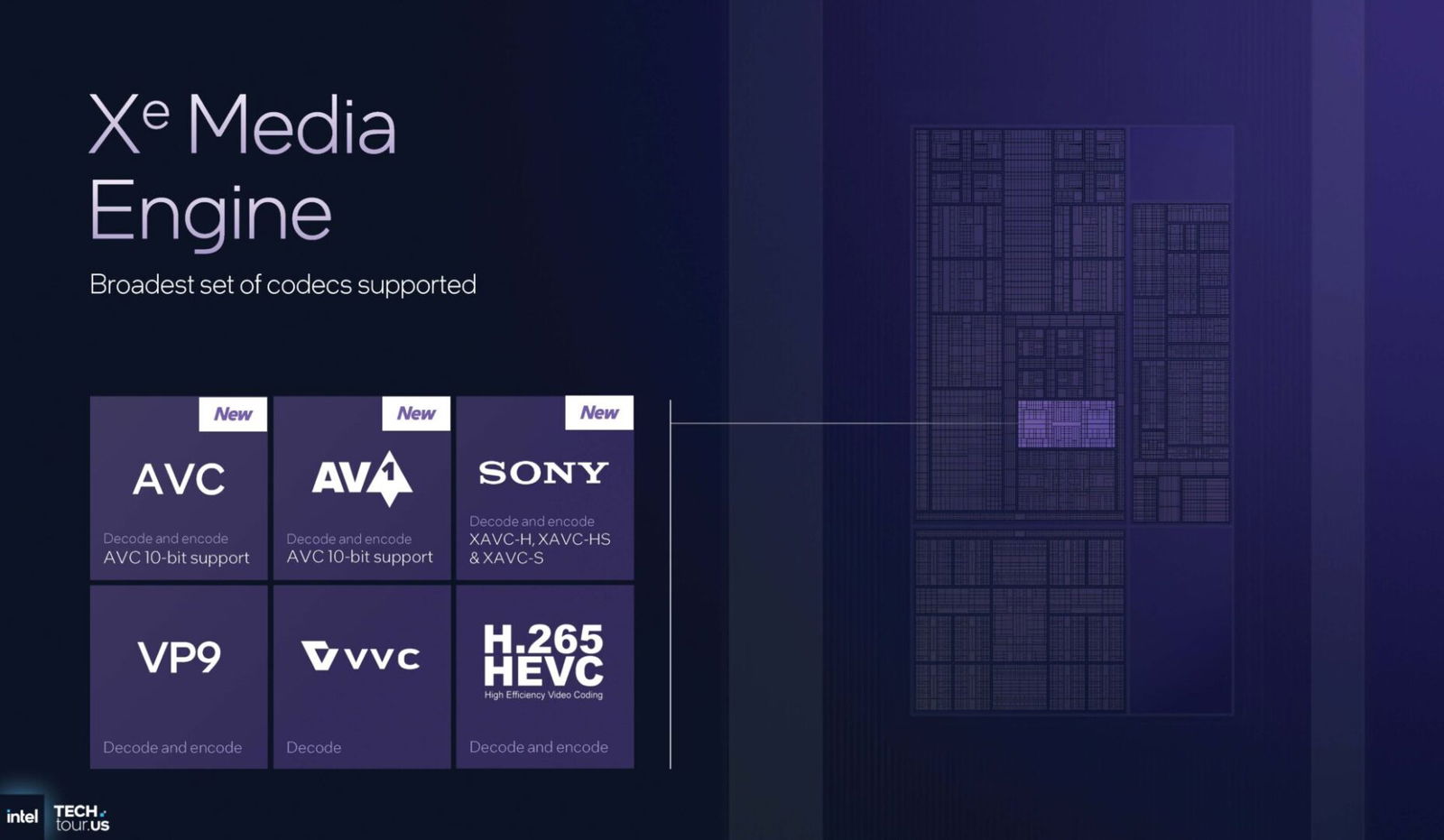
It should be noted that Intel appears to be highlighting efficiency as one of the key selling points of Panther Lake’s design. Building on lessons from the earlier Lunar Lake and Arrow Lake platforms, power management now employs enhanced Intel Thread Director controls, dynamic biasing and new scheduling models that adapt to performance needs in real time. Reduced power draw across both CPU and GPU workloads, combined with intelligent firmware controls, is expected to deliver longer battery life and greater thermal headroom in everyday use.
Gaming on the go should also improve, thanks to refined platform tuning, faster load times and optimized delivery of game shaders—helping address the stutters and delays that have long affected mobile systems.
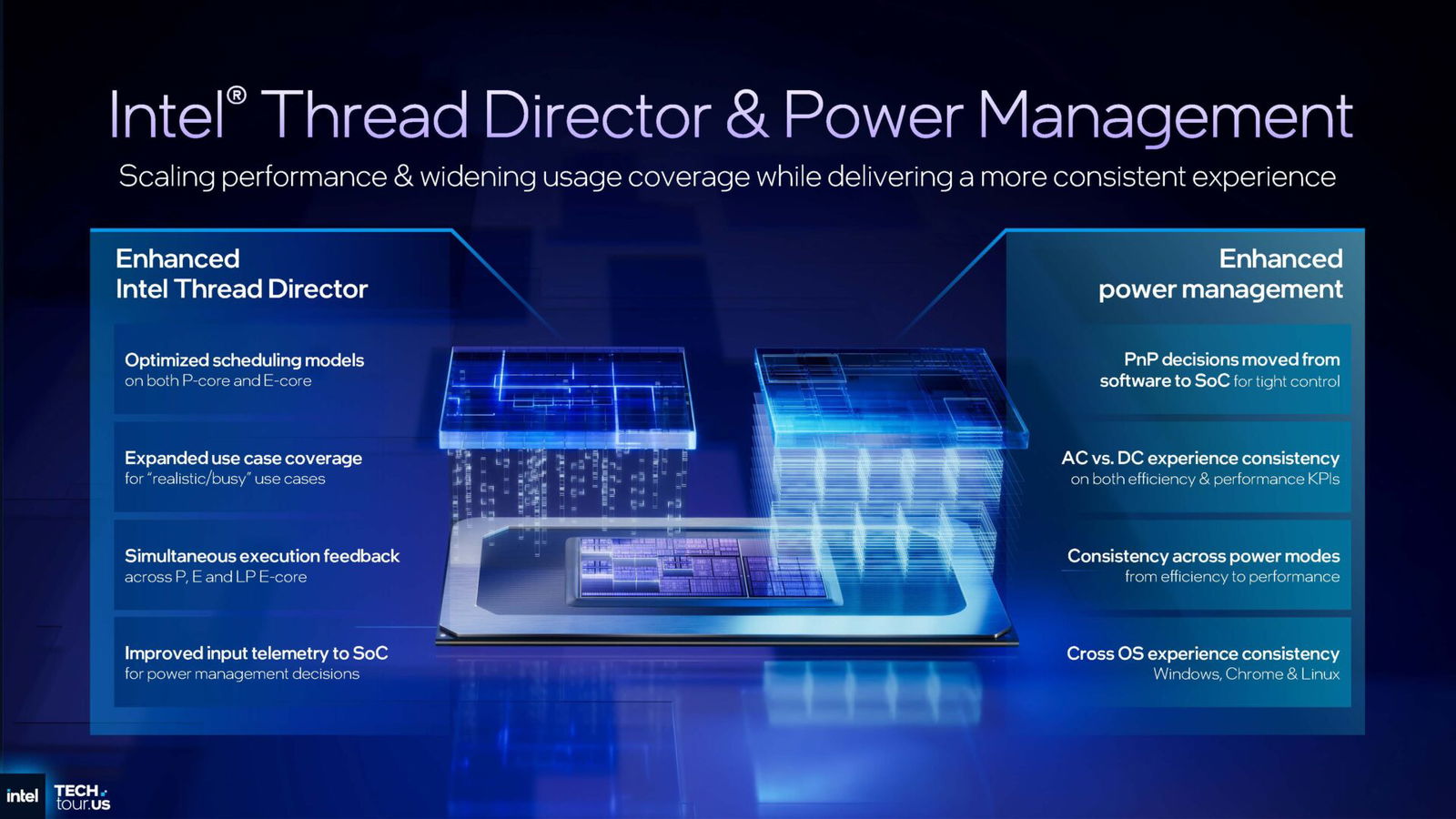
As a mobile-focused chip, it makes sense that connectivity also received significant attention, with Panther Lake featuring integrated Wi-Fi 7, Bluetooth 6 Core and Thunderbolt 4 and 5 support. This positions Panther Lake as a strong foundation for devices that demand both speed and flexibility. With these features in place, Intel’s latest mobile chips are poised to shape the next generation of laptops, ultrabooks and portable gaming rigs, giving manufacturers and users more ways than ever to work, play and create on the move.
Panther Lake seems to address many of the major issues critics have raised about Intel’s mobile chips in recent years, while improving on the strengths of past generations. Intel has faced a turbulent few months, but if Panther Lake can stick the landing and deliver on the promise of the 18A process, there is plenty to be excited about. With CES only a few months away, more details on Panther Lake’s capabilities are expected soon—offering an early look at how these new chips could shape the future of mobile computing for creators, gamers and everyday users alike.
